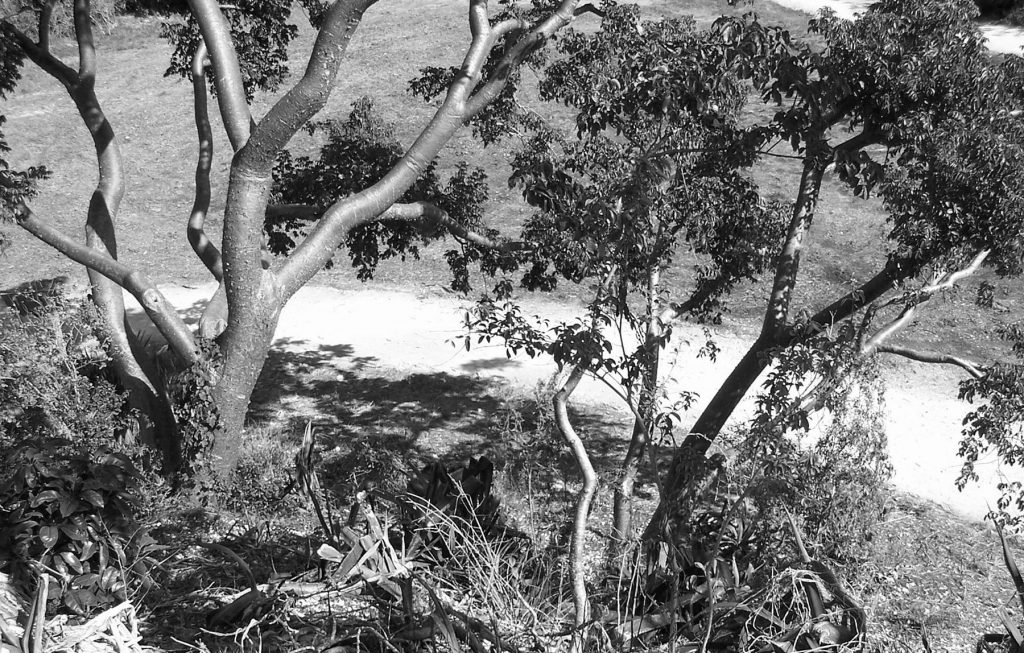For well over a year, I have been involved in a survey to locate and catalog the prominent vegetation on the grounds of the RRC.
It would have been completed somewhat sooner were it not for the “big winds.” Actually, three factors have caused the original survey to be considerably revised to capture a truer image of how the vegetation appears at this time.

Factors one and three — the erection of a perimeter fence around the RRC and the clean-up after the big blow — caused some disruption because heavy equipment, inherent destroyer of vegetation, had to be used in a few cases to get the jobs done. Other than some minor terrain disruption in a few areas, those necessary projects caused little real damage in the final analysis. On the other hand, let someone else tell you about how much of that fence had to be re-erected because of factor number two.
Factor two was the “big wind” itself — Hurricane Charley. Nothing much has been written about how much the RRC lost in terms of trees, shrubs, and smaller plants. But, before getting too drastic, keep in mind that nature has superlative resilience. Almost all that was cracked, knocked down, or blown away shortly will be partially or even fully restored by nature.
Upon first impression two days after the storm, the typical response was “Wow! What a huge mess this is.” Large numbers of the taller, bigger trees, both native and non-native, were defoliated. I am glad to report that new leaves are already showing themselves. The principal factor that is still missing is the shady, “tropical” canopies caused by aggressive vines reaching into the highest locations of the massive gumbo limbos and royal poincianas on the western slope of Brown’s Mound and the northern and southern slopes of Randell Mound. Most of the locations that were shaded are now open to an unusual flood of sunlight. We can expect big differences in the near future because of this change.
Enormous branches of the “soft wood” trees that flex too much under such overwhelming pressure — the gumbo limbos, the royal poincianas, the tropical almonds — were torn off and thrust to the ground; only a very few were actually uprooted. New growth is already beginning to appear, even though these elderly masters of the landscape may now be only half of their former selves.
A few of the trees with shallow root systems, like the despised Australian pines, were actually uprooted or blown over. We took the opportunity to cut the pines down and chop them up. Unfortunately, the stumps produce new growth that has to be harshly dealt with.
So, where do we stand now? Nature will soon heal almost all the wounds. It will be interesting to observe what comes next, as the vegetation continually changes under the control of natural forces.
This article was taken from the Friends of the Randell Research Center Newsletter Vol 4, No. 2. June 2005.